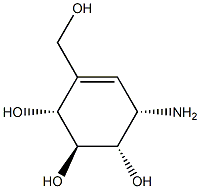LEMON
- Molecular Weight: 0
- Update Date: 2022-12-21 16:56:50
What is LEMON?
Chemical properties
Citrus limonum is an evergreen tree (shrub), native to the Far East; the original growing site is questionable. It was introduced into the Mediterranean region at the time of the Crusades. The plant grows to 6 m (20 ft) high. It has strong, branched roots and an erect trunk with several branches; the lower limbs are sometimes covered with thorns. The tree has alternate oval leaves, white flowers (from February to October) and oval fruits that are yellow when ripe. The rind of the fruits is thin and the epicarp is rough; the segmented endocarp contains a sour juice and oval seeds. The leaves (and terminal twigs), fruits and rind are the parts used. Lemon has a characteristic lemon-leaf odor and a sour, bitter taste.
Composition
Citrus fruits generally contain polysaccharides, lipids, organic acids, carote, vitamins, minerals, limonoids, flavonoids and volatile components.* Lemon is a good source of ascorbic acid (40 to 50 mg/g), potassium (150 mg/100 g) and bioflavonoids.
Taste threshold values
Taste characteristics at 5 to 10 ppm in 5% sugar and 0.10% CA: fresh, tangy, juicy lemon with good lemon body notes.
Safety information for LEMON
New Products
(S)-3-Aminobutanenitrile hydrochloride 4-Methylphenylacetic acid N-Boc-D-alaninol N-BOC-D/L-ALANINOL Tert-butyl bis(2-chloroethyl)carbamate 3-Morpholino-1-(4-nitrophenyl)-5,6-dihydropyridin- 2(1H)-one Furan-2,5-Dicarboxylic Acid Tropic acid 1-Bromo-3,5-Di-Tert-Butylbenzene S-2-CHLORO PROPIONIC ACID ETHYL ISOCYANOACETATE 2-Bromo-1,3-Bis(Dimethylamino)Trimethinium Hexafluorophosphate 4-IODO BENZOIC ACID 3-NITRO-2-METHYL ANILINE 1-(2,4-DICHLOROPHENYL) ETHANAMINE (2-Hydroxyphenyl)acetonitrile 4-Bromopyrazole 2-(Cyanocyclohexyl)acetic acid 4-methoxy-3,5-dinitropyridine 1-(4-(aminomethyl)benzyl)urea hydrochloride 2-aminopropyl benzoate hydrochloride diethyl 2-(2-((tertbutoxycarbonyl)amino) ethyl)malonate tert-butyl 4- (ureidomethyl)benzylcarbamate Ethyl-2-chloro((4-methoxyphenyl)hydrazono)acetateRelated products of tetrahydrofuran








You may like
-
 2033-24-1 98%View Details
2033-24-1 98%View Details
2033-24-1 -
 42831-50-5 5-METHYLISOXAZOLE-4-CARBOXYLIC ACID 98%View Details
42831-50-5 5-METHYLISOXAZOLE-4-CARBOXYLIC ACID 98%View Details
42831-50-5 -
 1975-50-4 98%View Details
1975-50-4 98%View Details
1975-50-4 -
 2-HYDROXY BENZYL ALCOHOL 98%View Details
2-HYDROXY BENZYL ALCOHOL 98%View Details
90-01-7 -
 2-Chloro-1,3-Bis(Dimethylamino)Trimethinium Hexafluorophosphate 221615-75-4 98%View Details
2-Chloro-1,3-Bis(Dimethylamino)Trimethinium Hexafluorophosphate 221615-75-4 98%View Details
221615-75-4 -
 61397-56-6 CIS BROMO BENZOATE 98%View Details
61397-56-6 CIS BROMO BENZOATE 98%View Details
61397-56-6 -
 14714-50-2 (2-Hydroxyphenyl)acetonitrile 98+View Details
14714-50-2 (2-Hydroxyphenyl)acetonitrile 98+View Details
14714-50-2 -
 118753-70-1 98+View Details
118753-70-1 98+View Details
118753-70-1